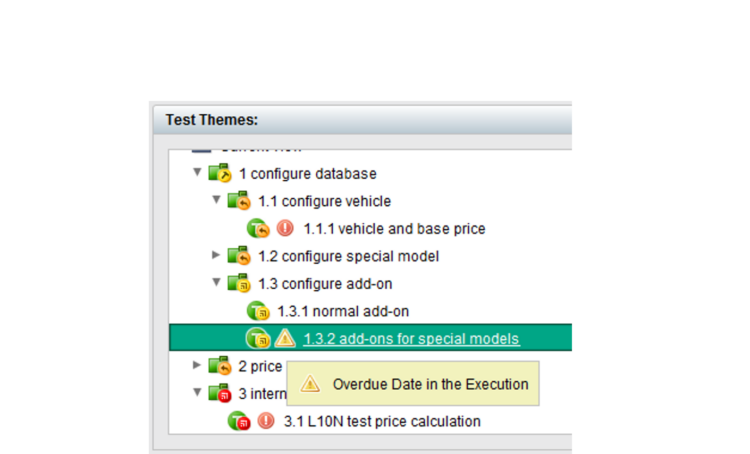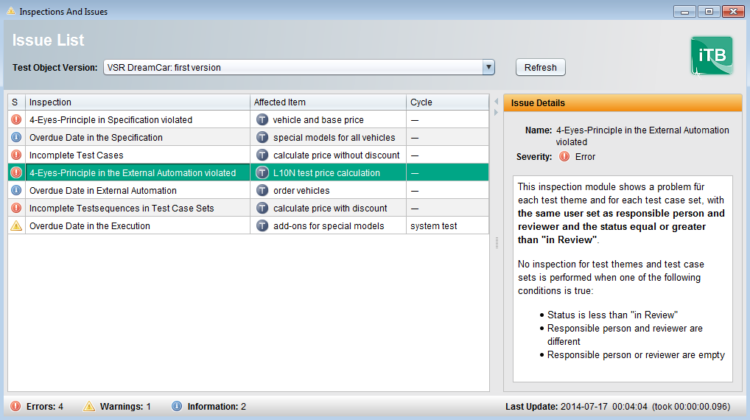More and more test projects require regular proof of test content and test results. A recurring challenge here is to ensure formal correctness and conformity with the process definition of the database used so that the evidence can be generated with consistent content.
Anyone who has ever checked all of their tests to see whether, for example, all of the tests carried out with incorrect results also reference an error or whether the reviewer of a test was not also the creator will be familiar with this problem.
Static code analysis has been used in programming for a very long time to detect errors in the source code at an early stage with the help of formal checks.
Static analysis of tests is based on this test procedure and carries out a series of checks based on test specifications and test results. These checks can include all elements of a test, i.e. not only its test specification but also its test results, for example.


